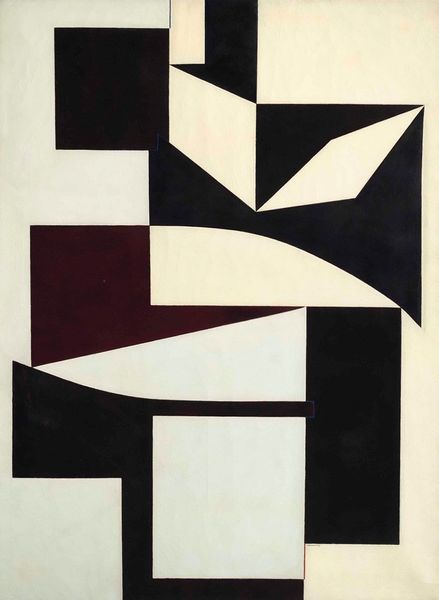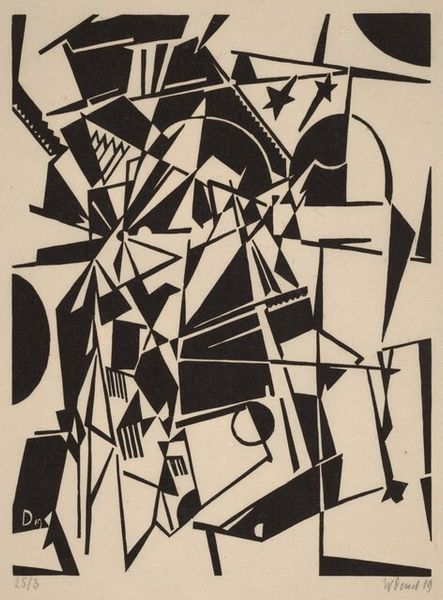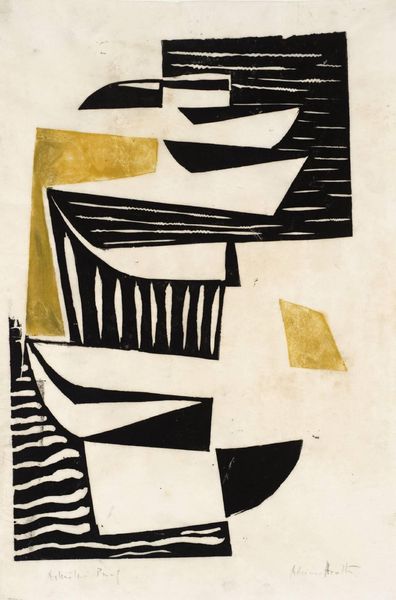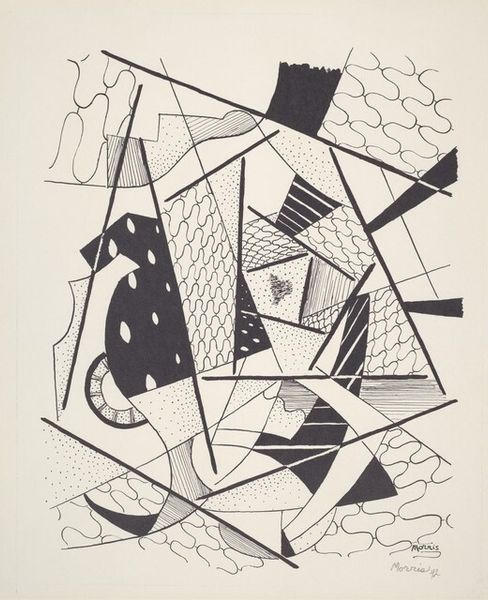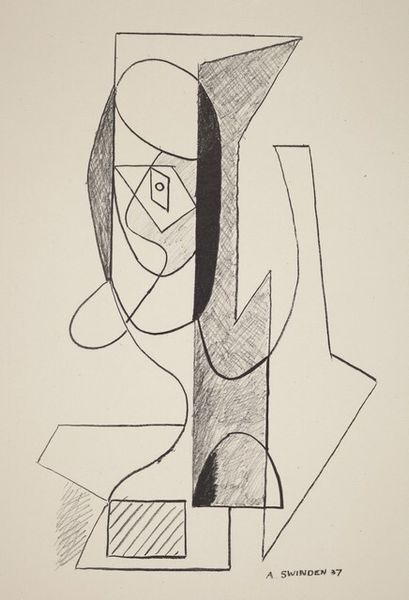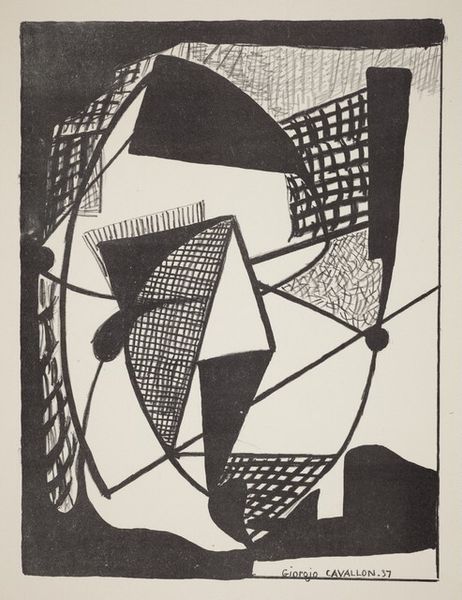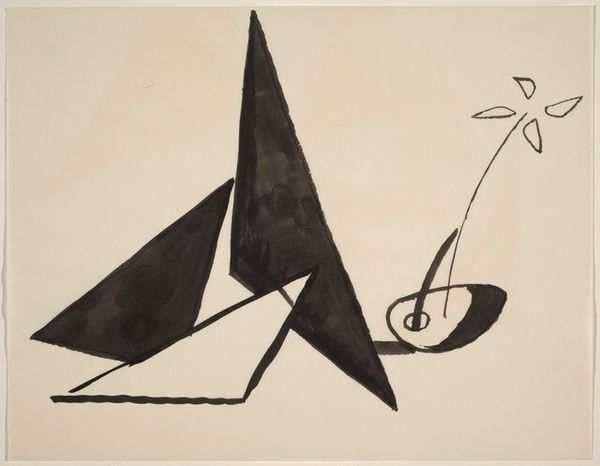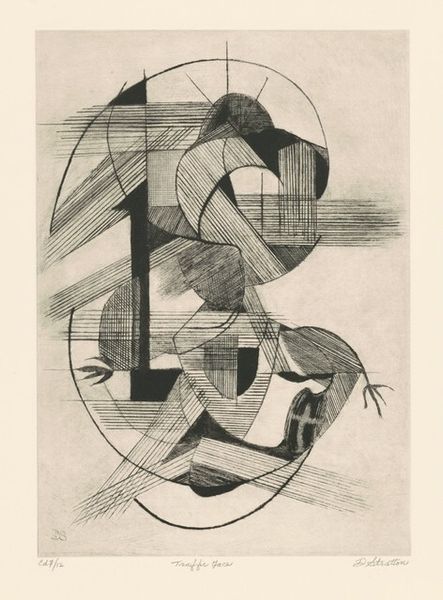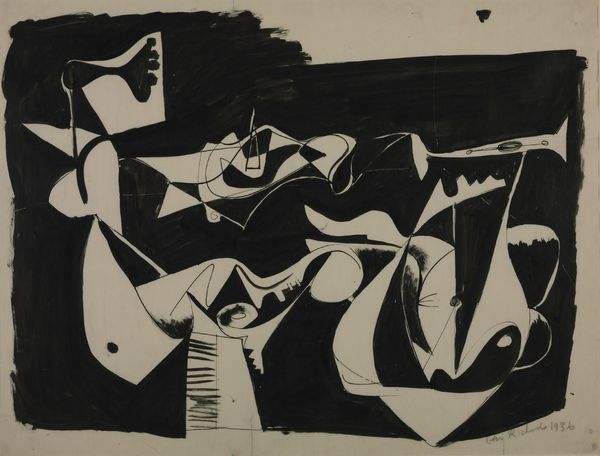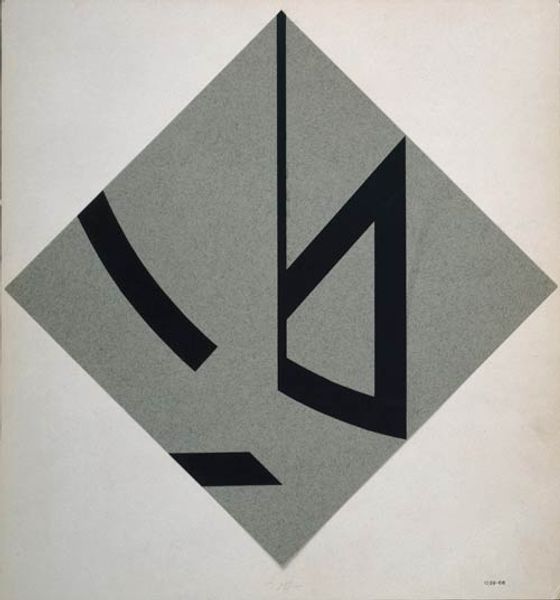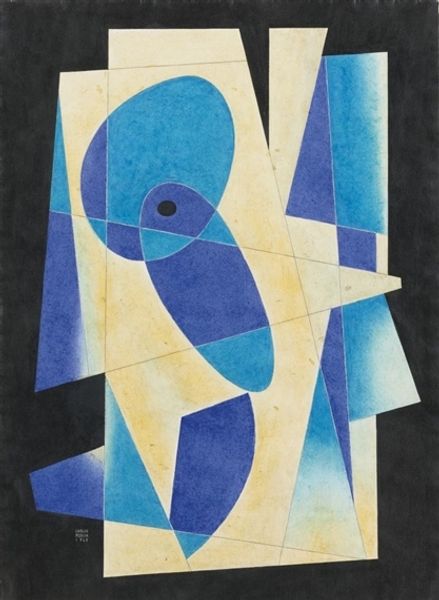
# print
#
form
#
geometric
#
geometric-abstraction
#
abstraction
#
line
#
modernism
Dimensions: Sheet:304 x 234mm
Copyright: National Gallery of Art: CC0 1.0
Curator: This is Arthur N. Christie’s "Untitled (Abstract)", a print dating back to 1937. What’s your initial take on it? Editor: It feels...dynamic. Almost unstable, in a way that's strangely captivating. The stark black shapes against the white background create a real tension. Curator: Indeed. Abstraction was burgeoning in the 1930s, as artists grappled with ways to represent a rapidly changing world, with geometric forms speaking to a sense of modernity and progress or sometimes anxiety in interwar era. Editor: I wonder if the sense of unease is deliberate. These intersecting shapes could reflect fractured social structures or disrupted identities, common themes during the era between world wars. Even if unintentional, the black and white contrast enhances this interpretation by underlining a divided and polarized world. Curator: That’s interesting. The print medium itself is relevant, too. Affordable and reproducible, prints democratized art, making it accessible beyond the elite, but there was criticism suggesting the quality and care diminished when not displayed at a fine art gallery or museum. Editor: Absolutely, considering the wider cultural context of the period. It challenges traditional hierarchies and notions of artistic value by blurring these boundaries. Did it democratize the art world by becoming widely accessible to all, or was the production demeaned in an era of industrial expansion and uncertainty about labor? Curator: These are questions that still resonate today! The image forces us to consider whether the form holds its own substance. The title provides no real additional help so each viewer really finds their own path. Editor: Right, it opens up so many interpretations. The work could act as a powerful catalyst for challenging dominant narratives, questioning authority, and creating alternative perspectives on history, power, and representation. Curator: Exactly. Christie’s work becomes an invitation to confront the complexities of representation and power in a way that extends far beyond its immediate aesthetic appeal. Editor: So even through the use of what appears to be simplified shapes, we are actually confronted with the bigger picture, of that particular socio-historical time, and the politics that it produced. Curator: A good summation! And a reminder that abstract forms, while seemingly detached from reality, are often deeply embedded within it.
Comments
No comments
Be the first to comment and join the conversation on the ultimate creative platform.
